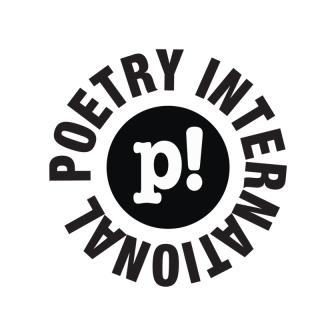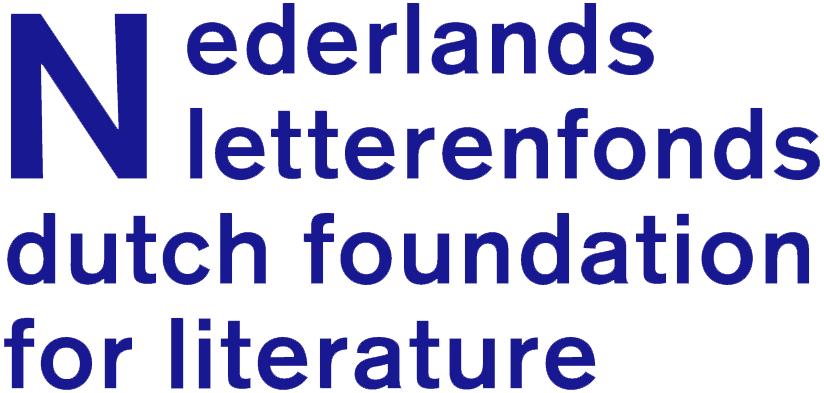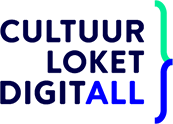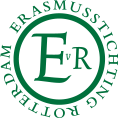Article
Hugo Claus I.M.

January 19, 2009
His contemporaries and peers mourned his loss and affirmed his stature. Harry Mulisch, the only other living author in Dutch to be proposed for the Nobel Prize, said: “I have lost a friend and the literary world a great figure”. The poet Remco Campert had no hesitation in calling him “the greatest writer of my generation”.
Though often a controversial figure, he was rarely overtly political. His sympathies were with the underdog, but he never descended to agitprop. Claus was the recipient during his lifetime of an unprecedented seven state prizes and in 1986 received the supreme award, the Prize for Dutch Literature. He was in all senses a larger-than-life figure: first and foremost in his great productivity, as a poet, novelist and dramatist (with some 150 separate publications), but also as a painter (a member of the international CoBrA group), scriptwriter and director for stage and screen. Claus famously affected ‘laziness’, but that is belied by both the oeuvre itself and by the testimony of those close to him. The actress Sylvia Kristel, a long-time companion and mother of his son, remembers his ‘monastic’ sense of discipline.
Besides its sheer volume his work is also amazingly diverse and eclectic. “Purity is the dirtiest word I know,” he is quoted as saying. Or equally frankly: “I have a perverse inclination to do things I’ve never done before. As a result I often fall flat on my face. It’s a question of disposition – I don’t dig like [certain contemporary Dutch writers]. They dig, dig, dig. I’m more of a butterfly.”
The novelist J.M. Coetzee, in a Guardian article (24 February 2007) clearly designed to advance Claus’s candidacy for the elusive Nobel Prize, surveyed the 1,400-page Collected Poems 1948–2004, from his startling debut De Oostakkerse gedichten (Poems from Oostakker, 1955), with their linguistic and rhythmical virtuosity, urgent physicality, animal eroticism and bleak mythical undertow, to the more regular forms and understated tone of his later love lyrics and occasional verse, a recent selection of which, translated by John Irons (Greetings, New York: Harcourt, 2005), fills a glaring gap. Coetzee’s measured eulogy concludes: “Hugo Claus is not a great lyricist, and though his style is crisp and pointed he cannot be called a great satirist or epigrammatist either. From the beginning, however, his poetry has been marked by an uncommon mix of intelligence and passion, given expression in a medium over which he has such light-fingered control that art becomes invisible.” In 2005 Claus expressed some disillusion with poetry and with the lack of response to his own, but posterity is likely to disagree with him.
The first major influence on Claus’s extensive dramatic work was Antonin Artaud, the prophet of the ‘theatre of cruelty’, but Artaud’s is never a defining influence. Indeed, surveying his output of plays, one often has the impression that he redefines himself with each new work. It is a huge leap, for example, from the gritty and partly biographically-based realism of Suiker (Sugar, 1958), set among a community of migratory farm labourers, to the charged melodrama of Vrijdag (Friday, 1969) on the recurring theme of incest, which anticipates Festen by thirty years. The play was quite successfully performed in an adaptation by Christopher Logue at the Theatre Upstairs at the Royal Court in 1971, though the transposition of the action from Flanders to Fulham robbed it of some of its resonance. One of his greatest achievements in the theatre remains his spectacular satirical burlesque Het leven en de werken van Leopold II (The Life and Works of King Leopold II, 1970) where he tackles the outrageous colonial exploits of the Belgian monarch in the Congo and their tragic repercussions in the 1960s – themes that he rightly argues had hitherto been sadly neglected in Flemish writing – in a pantomimic style quite worthy of Dario Fo. When challenged about the comparative absence of black faces on stage, he retorted that he was studying the oppressor, not the oppressed. The influence of such work on a younger talent like Tom Lanoye is clearly evident. Besides his original work for the theatre, Claus was a prolific translator and adaptor, of among others Sophocles, medieval mystery plays, Spanish Renaissance dramas, Tourneur, Ben Jonson, Dylan Thomas and host of others. He had the omnivorous erudition and enthusiasm of the autodidact.
In fiction, it should be mentioned that he was an original and underrated short-story writer, in the collection Natuurgetrouw (True to Nature, 1954) and others. One exceptional work that Claus himself later adapted for the stage is the novella De verzoeking (The Temptation, 1981), the interior monologue of a dying nun. This adaptation of his own fiction became a habit with Claus. One could even argue that his plays, which continue to draw audiences throughout the Low Countries, are likely to outlast all but his best fiction.
He first gained attention as a prose writer with De Metsiers (The Duck Hunt, 1950), the product of a challenge by a publisher who dared him to attempt a Faulkner-style multi-perspective narrative. In De verwondering (Bewilderment, 1962; translation in preparation) he shows himself a fully-fledged modernist, tracing a disturbed schoolteacher’s links with a sinister fascist group. Het jaar van de kreeft (The Year of Cancer, 1972) is a more conventional story with autobiographical elements including a well-publicised affair with a famous actress. Een zachte vernieling (A Soft Destruction, 1988) is a retrospective look at his CoBrA years, while De geruchten (Rumours, 1996) returns to the theme of colonialism and its aftermath. However, in 1983 Claus produced his fictional masterpiece, Het verdriet van België (The Sorrow of Belgium; Harmondsworth: Penguin Books, 1991). The book, one of only three Dutch-language works to achieve the exalted status of a ‘Penguin Classic’, is essentially a Bildungsroman showing the growth to manhood of a Flemish boy, Louis Seynaeve, during and after the Second World War in the murky worlds of clericalism, Flemish nationalist politics and collaboration. However, the novel’s masterly evocation of the aspirations equivocations and frustrations of a whole society is stunning and deserves a much wider readership. Very appropriately, the covers of both Dutch and English editions feature a haunting street scene by the Flemish painter James Ensor.
For a Dutch-language author Claus has been widely translated, and, as has been noted, a selection of his prose and poetry is available in English. Why then has he not (yet) reached a wider audience? Among the recent flood of media tributes in the Low Countries, one young journalist suggested it was because of the difficulty of translating him. There is a deal of truth in that remark. He is a ‘difficult’ writer in two respects: firstly his literary roots lie in modernism and experimentalism (though he has proved himself quite capable of linear narrative it is not his preferred form), and secondly, his language, a stylised form of his native West-Flemish is less accessible than the lucid transparency aimed at by many of his Northern counterparts. His Burgundian exuberance and prolixity – the mythical, anarchic figure of Til Uilenspiegel sometimes comes to mind – is an obstacle for some. Cumulatively, however, his prose rewards the reader’s effort to join the author on his adventure in language, which in one his more oracular definitions he calls ‘an anagram of the world’.
Claus’s work has been called a cosmos in its own right, which defies exhaustive definition. Yet this Promethean artist, often Baroque, elusive and at times self-contradictory, is, like the late Yeats, capable of stunning simplicity. Perhaps this tribute can best conclude with his own words in commemoration of a cataclysm that links his native West Flanders with these islands:
IN FLANDERS FIELDS
Here the soil is most rank.
Even after all these years without dung
you could raise a prize death leek here.
The English veterans are getting scarce.
Every year they point to their yet scarcer friends:
Hill Sixty, Hill Sixty-One, Poelkapelle.
In Flanders Fields the threshers
draw ever smaller circles round the twisting trenches
of hardened sandbags, the entrails of death.
The local butter
tastes of poppies.
(translation John Irons)
Translator Paul Vincent looks back at the life and works of Hugo Claus, who died last year at the age of 78. Claus is one of the most prominent Dutch-language authors ever.
The news of Hugo Claus’s death at the age of 78 was momentous, but not entirely a surprise – he had been suffering for some time from Alzheimer’s disease. The fact that his end was assisted provoked some criticism in Roman Catholic circles, since Flanders is still nominally largely Catholic – much to the chagrin of the anti-clerical Claus. His decision, though, was staunchly and movingly defended by Flemish Prime Minister Guy Verhofstadt, who knew him personally and surmised that it was the progressive loss of coherent language that made continued existence unbearable for this verbal magician.His contemporaries and peers mourned his loss and affirmed his stature. Harry Mulisch, the only other living author in Dutch to be proposed for the Nobel Prize, said: “I have lost a friend and the literary world a great figure”. The poet Remco Campert had no hesitation in calling him “the greatest writer of my generation”.
Though often a controversial figure, he was rarely overtly political. His sympathies were with the underdog, but he never descended to agitprop. Claus was the recipient during his lifetime of an unprecedented seven state prizes and in 1986 received the supreme award, the Prize for Dutch Literature. He was in all senses a larger-than-life figure: first and foremost in his great productivity, as a poet, novelist and dramatist (with some 150 separate publications), but also as a painter (a member of the international CoBrA group), scriptwriter and director for stage and screen. Claus famously affected ‘laziness’, but that is belied by both the oeuvre itself and by the testimony of those close to him. The actress Sylvia Kristel, a long-time companion and mother of his son, remembers his ‘monastic’ sense of discipline.
Besides its sheer volume his work is also amazingly diverse and eclectic. “Purity is the dirtiest word I know,” he is quoted as saying. Or equally frankly: “I have a perverse inclination to do things I’ve never done before. As a result I often fall flat on my face. It’s a question of disposition – I don’t dig like [certain contemporary Dutch writers]. They dig, dig, dig. I’m more of a butterfly.”
The novelist J.M. Coetzee, in a Guardian article (24 February 2007) clearly designed to advance Claus’s candidacy for the elusive Nobel Prize, surveyed the 1,400-page Collected Poems 1948–2004, from his startling debut De Oostakkerse gedichten (Poems from Oostakker, 1955), with their linguistic and rhythmical virtuosity, urgent physicality, animal eroticism and bleak mythical undertow, to the more regular forms and understated tone of his later love lyrics and occasional verse, a recent selection of which, translated by John Irons (Greetings, New York: Harcourt, 2005), fills a glaring gap. Coetzee’s measured eulogy concludes: “Hugo Claus is not a great lyricist, and though his style is crisp and pointed he cannot be called a great satirist or epigrammatist either. From the beginning, however, his poetry has been marked by an uncommon mix of intelligence and passion, given expression in a medium over which he has such light-fingered control that art becomes invisible.” In 2005 Claus expressed some disillusion with poetry and with the lack of response to his own, but posterity is likely to disagree with him.
The first major influence on Claus’s extensive dramatic work was Antonin Artaud, the prophet of the ‘theatre of cruelty’, but Artaud’s is never a defining influence. Indeed, surveying his output of plays, one often has the impression that he redefines himself with each new work. It is a huge leap, for example, from the gritty and partly biographically-based realism of Suiker (Sugar, 1958), set among a community of migratory farm labourers, to the charged melodrama of Vrijdag (Friday, 1969) on the recurring theme of incest, which anticipates Festen by thirty years. The play was quite successfully performed in an adaptation by Christopher Logue at the Theatre Upstairs at the Royal Court in 1971, though the transposition of the action from Flanders to Fulham robbed it of some of its resonance. One of his greatest achievements in the theatre remains his spectacular satirical burlesque Het leven en de werken van Leopold II (The Life and Works of King Leopold II, 1970) where he tackles the outrageous colonial exploits of the Belgian monarch in the Congo and their tragic repercussions in the 1960s – themes that he rightly argues had hitherto been sadly neglected in Flemish writing – in a pantomimic style quite worthy of Dario Fo. When challenged about the comparative absence of black faces on stage, he retorted that he was studying the oppressor, not the oppressed. The influence of such work on a younger talent like Tom Lanoye is clearly evident. Besides his original work for the theatre, Claus was a prolific translator and adaptor, of among others Sophocles, medieval mystery plays, Spanish Renaissance dramas, Tourneur, Ben Jonson, Dylan Thomas and host of others. He had the omnivorous erudition and enthusiasm of the autodidact.
In fiction, it should be mentioned that he was an original and underrated short-story writer, in the collection Natuurgetrouw (True to Nature, 1954) and others. One exceptional work that Claus himself later adapted for the stage is the novella De verzoeking (The Temptation, 1981), the interior monologue of a dying nun. This adaptation of his own fiction became a habit with Claus. One could even argue that his plays, which continue to draw audiences throughout the Low Countries, are likely to outlast all but his best fiction.
He first gained attention as a prose writer with De Metsiers (The Duck Hunt, 1950), the product of a challenge by a publisher who dared him to attempt a Faulkner-style multi-perspective narrative. In De verwondering (Bewilderment, 1962; translation in preparation) he shows himself a fully-fledged modernist, tracing a disturbed schoolteacher’s links with a sinister fascist group. Het jaar van de kreeft (The Year of Cancer, 1972) is a more conventional story with autobiographical elements including a well-publicised affair with a famous actress. Een zachte vernieling (A Soft Destruction, 1988) is a retrospective look at his CoBrA years, while De geruchten (Rumours, 1996) returns to the theme of colonialism and its aftermath. However, in 1983 Claus produced his fictional masterpiece, Het verdriet van België (The Sorrow of Belgium; Harmondsworth: Penguin Books, 1991). The book, one of only three Dutch-language works to achieve the exalted status of a ‘Penguin Classic’, is essentially a Bildungsroman showing the growth to manhood of a Flemish boy, Louis Seynaeve, during and after the Second World War in the murky worlds of clericalism, Flemish nationalist politics and collaboration. However, the novel’s masterly evocation of the aspirations equivocations and frustrations of a whole society is stunning and deserves a much wider readership. Very appropriately, the covers of both Dutch and English editions feature a haunting street scene by the Flemish painter James Ensor.
For a Dutch-language author Claus has been widely translated, and, as has been noted, a selection of his prose and poetry is available in English. Why then has he not (yet) reached a wider audience? Among the recent flood of media tributes in the Low Countries, one young journalist suggested it was because of the difficulty of translating him. There is a deal of truth in that remark. He is a ‘difficult’ writer in two respects: firstly his literary roots lie in modernism and experimentalism (though he has proved himself quite capable of linear narrative it is not his preferred form), and secondly, his language, a stylised form of his native West-Flemish is less accessible than the lucid transparency aimed at by many of his Northern counterparts. His Burgundian exuberance and prolixity – the mythical, anarchic figure of Til Uilenspiegel sometimes comes to mind – is an obstacle for some. Cumulatively, however, his prose rewards the reader’s effort to join the author on his adventure in language, which in one his more oracular definitions he calls ‘an anagram of the world’.
Claus’s work has been called a cosmos in its own right, which defies exhaustive definition. Yet this Promethean artist, often Baroque, elusive and at times self-contradictory, is, like the late Yeats, capable of stunning simplicity. Perhaps this tribute can best conclude with his own words in commemoration of a cataclysm that links his native West Flanders with these islands:
IN FLANDERS FIELDS
Here the soil is most rank.
Even after all these years without dung
you could raise a prize death leek here.
The English veterans are getting scarce.
Every year they point to their yet scarcer friends:
Hill Sixty, Hill Sixty-One, Poelkapelle.
In Flanders Fields the threshers
draw ever smaller circles round the twisting trenches
of hardened sandbags, the entrails of death.
The local butter
tastes of poppies.
(translation John Irons)
© Paul Vincent
Sponsors
























